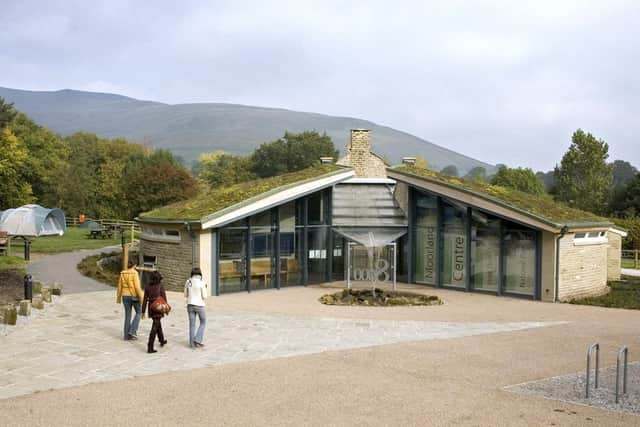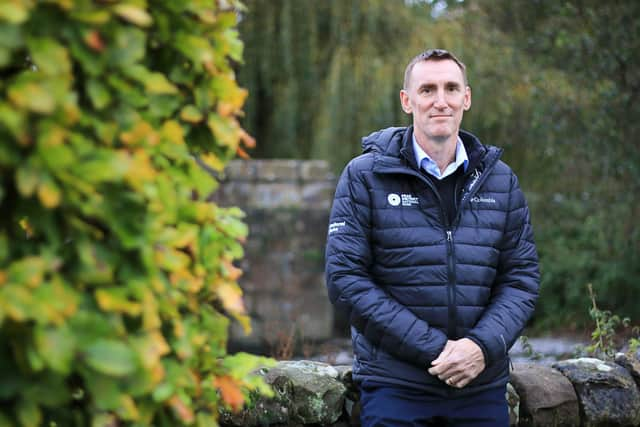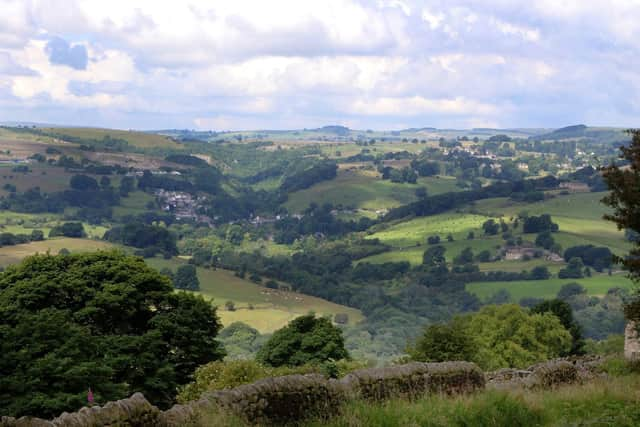Peak District National Park Authority votes to press on with closing visitor centres
and live on Freeview channel 276
As previously reported, the closure of centres in Bakewell, Castleton, Edale and the Upper Derwent valley have been tabled as part of an operational review at PDNPA, launched in February by chief executive Phil Mulligan, along with potential staff redundancies.
Mr Mulligan, in post since September 2022, has cited a ‘real terms’ cut in the authority’s annual Defra government grant of around 40 per cent over the last decade – saying it receives around the same amount now as it did in 2012, with no increases in line with inflation.
Advertisement
Hide AdAdvertisement
Hide AdThe councillors and Government appointees who make up the authority held a meeting behind closed doors on Friday, April 28, and agreed to move on to a formal internal workforce consultation on the proposals, before informing staff earlier this week – though PDNPA was unable to comment publicly until today due to pre-election purdah rules.


Mr Mulligan said: “Any decisions that affect our workforce and colleagues are among the hardest to make. However, making these difficult choices now means that we can work towards a sustainable future for our organisation as a whole, where we have the ability to deliver well in the areas that are so crucial to the Peak District and our nation like the protection of our heritage, nature’s recovery and climate change.
“Of course, providing a public service for our visitors to ensure their time with us is safe, enjoyable and responsible – whatever their needs or background – is still crucial, but we also have to embrace new and dynamic ways to achieve this without some of the costs we have seen in recent years.”
The idea of shutting the centres has been criticised by community organisations and the staff trade union UNISON, and the meeting of authority members acknowledged significant public opposition before taking their decision.
Advertisement
Hide AdEven Derbyshire Dales MP Sarah Dines, a junior Government minister, has called the proposals into question, saying: “The Peak District Authority is in danger of losing sight of its core mission, which is to provide an amenity for the public.


Advertisement
Hide Ad“The visitor centres are the single most import and visible interface with the very people the park exists to serve.”
Officially, the authority says it is now consulting on the “potential closing or repurposing” of the four centres, but it also released figures which point towards a very different model of visitor engagement in the future.
Combined, the centres currently currently host around 400,000 people per year – around one in 30 of the park’s estimated 13million annual visitors – whereas its website attracts 2.5million visits annually and its social media channels gather a reported audience of some 150,000 and reach far beyond that.
Advertisement
Hide AdIn that context, PDNPA is reassessing the running costs of bricks-and-mortar information points, and whether staff and volunteers could be deployed in other ways to directly engage visitors out and about in the park.


The downside of that new operational model leaves 65 people at risk of redundancy with the creation of 31 new posts. Overall, the authority anticipates a net reduction in its workforce of around seven per cent.
Advertisement
Hide AdFurther proposals include the reduction of senior management positions by more than half, along with the merging and outsourcing of some administrative services, and possible changes to individual roles and departmental structures.
The authority says the transition process towards the new model will be funded by a £400,000 grant received from Defra in March, which at the time Mr Mulligan said would “underpin some of the activities we have already undertaken in 2022 and so far in 2023 and, in turn, will support our programme of future investment.”
Advertisement
Hide AdWhile some staff will be fearing the worst, there could also be winners from the process, as another key factor in the proposals is the intent to reallocate spending towards essential statutory functions such as the planning department.
The Derbyshire Times understands that PDNPA has struggled to recruit and retain qualified planning officers in recent years as it has been unable to compete with terms offered in the private sector and other public bodies.
At the same time, it has been contesting a string of high profile battles with prospective developers, ultimately contributing to unsustainable pressure on that part of the workforce who are tasked with maintaining a sensitive approach to the park’s historic character.
Advertisement
Hide AdProposals approved last week could see pay scales changed as the organisation seeks to achieve parity with similar posts in comparable organisations by January 2024.
Advertisement
Hide AdMr Mulligan said: “I want to recognise the passion and energy that our front-facing staff bring to their role in welcoming visitors and that the tough decisions being proposed do not reflect these teams’ commitment, but are as a result of factors in the wider financial landscape.
“I also completely understand that proposed changes to the pay of other colleagues in the authority may be hard to rationalise, however we also have our statutory obligations as a national park authority and these must be met; which is especially hard when we are unable to be competitive as an employer.”
He added: “The changes proposed will ultimately see us becoming a more affordable and resilient organisation in the face of ongoing financial uncertainty, and safeguard our critical role in caring for the Peak District.”
All visitor operations are continuing to operate as normal for the time being, and the authority’s members will meet again on Friday, July 28, to agree final proposals for implementation.